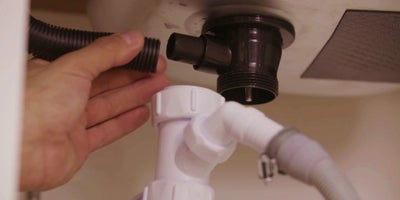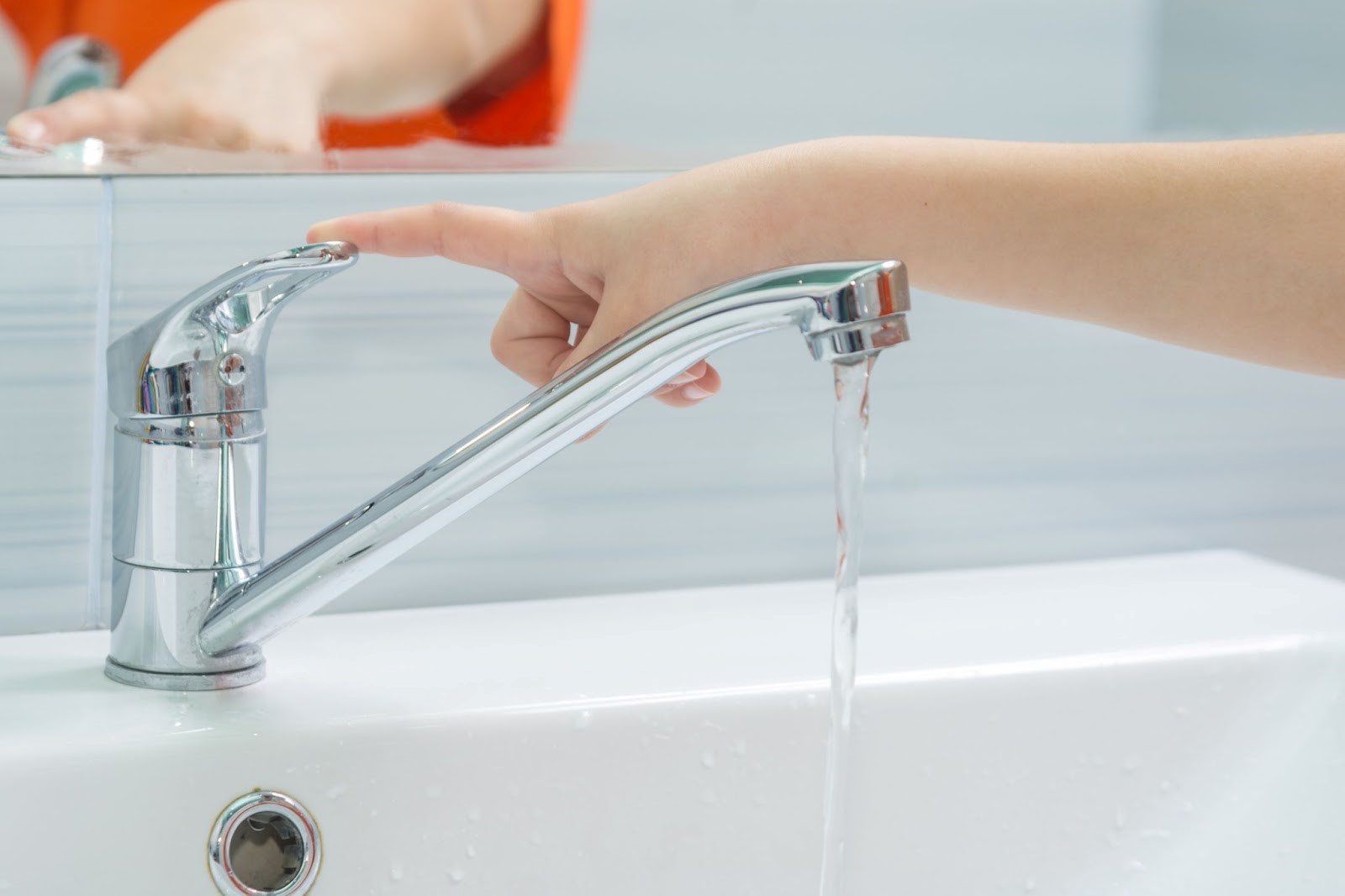Valuable Steps To Repair A Slow-Draining Sink
Valuable Steps To Repair A Slow-Draining Sink
Blog Article
Everyone may have their private idea with regards to 7 Ways To Fix A Slow-Draining Sink Before You Call A Plumber.

Intro
We have actually all existed: You're brushing your teeth or cleaning your hands, and you see the water pooling in the sink. As opposed to rapidly swirling down the drain, it lingers, turning your once-refreshing morning routine into a miniature swamp scene. A slow-draining sink isn't simply aggravating; it's commonly a sign of larger pipes concerns prowling underneath the surface area. The good news is that a lot of slow-draining sinks can be taken care of with a little knowledge, a couple of basic devices, and some patience. Ready to tackle this project head-on? Let's roll up our sleeves and dive right in.
Recognizing the Reasons For a Slow-Draining Sink
Before you start poking around in your pipelines, it assists to know what may be creating the slowdown. Recognizing the root cause makes it easier to choose the ideal repair.
Typical Offenders Behind Slow Drainage
So, what's clogging things up? Normally, it's a mixture of everyday debris-- think hair, soap scum, toothpaste residue, and leftover food particles. Over time, these little bits accumulate and cling to the pipeline wall surfaces, slowly narrowing the passage and making it harder for water to travel through. Sometimes, natural resource from difficult water can additionally contribute to the crud, creating the best tornado for persistent blockages.
When is it Time to Do Something About It?
If you observe the water draining pipes slower than normal, it's a great idea to intervene faster instead of later on. Waiting too long could cause complete blockages, undesirable odors, and even pipe damages. If the water takes greater than a couple of seconds to remove after switching off the faucet, consider it a warning and get ready to put on your do it yourself hat.
Devices and Materials You'll Need
The right devices make all the distinction. Fortunately, you will not need a fully equipped plumbing technician's van to get the job done.
Necessary Tools for Do It Yourself Repair Works
A bettor is your go-to beginning point. A little, sink-sized plunger produces suction that can remove minor blockages. For more relentless clogs, a drainpipe serpent (sometimes called a plumbing technician's auger) works marvels. A set of gloves, a flashlight, and possibly a set of safety goggles are likewise helpful.
Suggested Cleaning Solutions
Light meal soap and hot water can help break down greasy build-up. A blend of baking soda and vinegar is a tried and true home remedy, and enzymatic cleansers use a more environment-friendly strategy. Keep chemical drainpipe cleaners as a last hope, as they can be harsh on your pipelines.
Security First: Precautions and Prep work
Prior to you launch into unclogging mode, consider security. You're dealing with potentially unclean water and particles, so slip on a pair of gloves. If you're using chemical cleansers, guarantee the room is well-ventilated and comply with the guidelines on the tag.
Safety Gear and Office Setup
Set some old towels or rags around the sink location to catch splashes. Clear away any kind of things that may get in your way, like soap dispensers or tooth brush holders. See to it you have great lights-- get hold of a flashlight if needed.
Step-by-Step Guide to Repairing a Slow-Draining Sink
Now, let's enter the nitty-gritty. This step-by-step process will certainly direct you via easy methods to recover your sink's drain.
Action 1: Eliminate and Clean the Stopper
Commonly, the stopper (that little plug you lower to block water) is the first perpetrator. Remove it very carefully and clean off any kind of hair or crud entraped around its base. Wash it thoroughly before placing it back in place.
Action 2: Use a Plunger to Remove Debris
Got that plunger all set? Placement it over the drain and provide it a couple of company pumps. The idea is to create suction that can loosen any kind of clog. If you see little bits of debris floating up, you're on the appropriate track.
Step 3: Attempt a Drainpipe Serpent or Cord Wall Mount
If the bettor does not suffice, it's time to highlight the drain snake. Delicately feed it right into the drain and spin as you go. You may feel some resistance-- that's most likely the clog. Keep turning and pulling up until you get rid of the blockage. If you don't have a drainpipe serpent, a straightened cord hanger can operate in a pinch.
Tip 4: Apply a Do It Yourself Drainpipe Cleaner
An all-natural cleaner made from baking soft drink and vinegar can break down recurring gunk. Pour half a mug of baking soft drink into the drain, adhered to by half a cup of vinegar. Allow it fizz for around 15 minutes, after that flush with hot water. This chain reaction typically does wonders for minor obstructions.
Step 5: Reconstruct and Examine the Sink
Put every little thing back together and run the tap. Does the water currently swirl down the drain at a reputable speed? If yes, offer on your own a pat on the back. If not, don't anguish-- there are still a few even more dress up your sleeve.
Alternate Methods for Stubborn Clogs
Not all obstructions are created equivalent. If your sink still rejects to work together, take into consideration these alternate solutions.
Sodium Bicarbonate and Vinegar Technique
We already discussed this, but it's worth keeping in mind once more. This gentle, environment-friendly method is more secure than chemical cleansers and often fairly reliable.
Enzymatic Drain Cleaners
Enzyme-based cleaners use all-natural bacteria to digest organic matter. They're an excellent selection if you're wanting to stay clear of harsh chemicals. Simply bear in mind, they might take a bit longer to work their magic.
Chemical Drain Cleaners: Benefits And Drawbacks
Chemical cleaners can blast via hard blockages quickly, but they're not without downsides. They can generate heat and fumes, damage pipelines if made use of exceedingly, and posture ecological threats. Utilize them sparingly, and always follow the directions very carefully.
Preventive Measures to Keep Your Sink Flowing
Prevention is the best cure. By taking on a couple of easy practices, you can maintain your sink from reducing in the first place.
Regular Cleansing Routines
Wipe down the sink basin and component location consistently. Get rid of hair or food bits prior to they have a chance to wash down the drain.
Preventing Hazardous Compounds Down The Tubes
Hesitate before unloading coffee premises, oil, or fibrous vegetable scraps down the sink. These offenders hold on to pipe walls, producing blockages over time.
Routine Upkeep Checks
Set up a quick month-to-month inspection. Run hot water with the sink for a couple of minutes, taking notice of the flow. If it appears slow-moving, act fast prior to it comes to be a full-on obstruction.
When to Call a Specialist Plumbing Professional
Sometimes, no matter just how tough you try, that block simply won't move. That's when it's time to generate the pros.
Indicators That Show a Much More Severe Problem
If your sink drains gradually in spite of multiple efforts, or if you discover water supporting in various other fixtures (like your shower or commode), you may have a more serious plumbing concern hiding deeper in the system.
Balancing Do It Yourself Initiatives with Professional Help
While DIY can conserve you money and offer a feeling of achievement, there's no shame in calling a specialist. A specialist plumber can analyze your entire pipes configuration, ensuring there's no underlying damages or long-lasting trouble that could cost you extra in the future.
Contrasting Costs and Long-Term Solutions
Prior to choosing, think about the big picture. An economical, quick fix could fix the trouble momentarily, but purchasing an extra long-term remedy might conserve you money and anxiety in the future.
Weighing the Expenditures of DIY vs. Professional Solutions
Do it yourself fixes typically cost little bit more than the rate of a plunger or a bottle of baking soft drink. Expert services, on the other hand, featured a cost however may stop repeated concerns and expensive repair work later on.
Purchasing Quality Fixtures and Upgrades
If your sink's style adds to regular clogs, it may be worth updating to higher-quality components or altering the plumbing design. Consider this an investment in your house's performance and comfort.
Final thought
A slow-draining sink can seem like a small irritation, yet it's often an indication that your plumbing needs a little tender loving care. By comprehending the root causes, employing the right devices and techniques, and dedicating to easy preventive measures, you can maintain your sink flowing freely. And when all else fails, never ever wait to call in a specialist-- your home's pipes deserves the financial investment in care and maintenance.
4 Tips to Fix a Slow Draining Sink
Removing the Pop-Up
This is a great place to start when it comes to troubleshooting a slow draining sink. If your sink has a pop-up, carefully take it out and remove debris that has built up around the tool. This will also allow you to see if there are any significant blockages in the drain that you can pull out on your own to help clear up the issue.
Use a Zip-It Tool
Like a snake for a large drain, a zip-it tool helps clear out any debris or hair from a sink drain. A tool like this can be used with a drain that pops out or not as it s thinner than most snake-like tools.
Use a Drain Cleaner
Whether making an at-home cleaner or buying a solution at the store, this is a common fix many turn to when it comes to a slow draining sink. There are several options available for purchase at local supermarkets, but for those who prefer to create their own solution, one of the most common is the following.
How to Unclog a Drain Naturally
Pour boiling water down the drain Pour cup of baking soda down the drain Pour cup of vinegar down the drain Wait 10 minutes Pour boiling water down the drain again Turn on the hot water faucet to clear out the solution Use a Plunger
As a worst-case scenario option, a plunger may be a good option for those who are still struggling to get debris out of their drain. This could be especially useful if there is a large item that you suspect may be significantly stuck down the drain.
https://www.abaileyplumbing.com/blog/2021/august/4-tips-to-fix-a-slow-draining-sink/

I stumbled upon that entry about 4 Tips to Fix a Slow Draining Sink while browsing the web. Are you aware of anybody else who is excited about Solved! How to Fix a Slow Sink Drain? Be sure promote it. We enjoy your readership.
Click Here Report this page